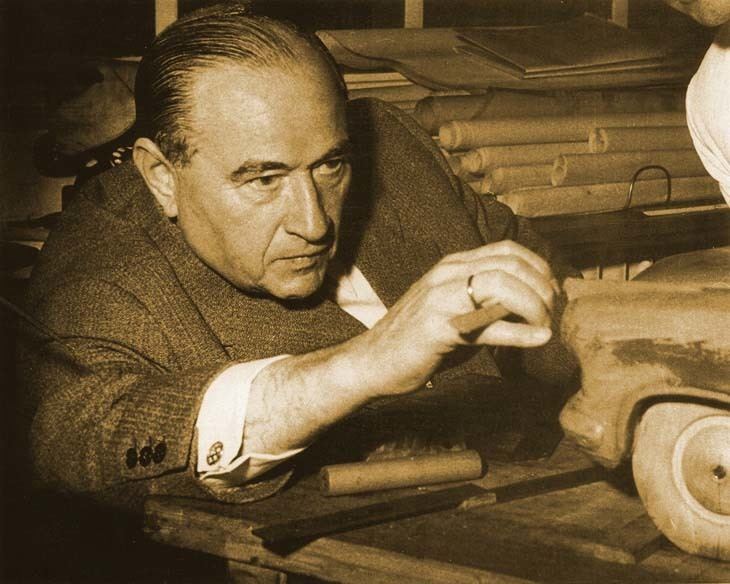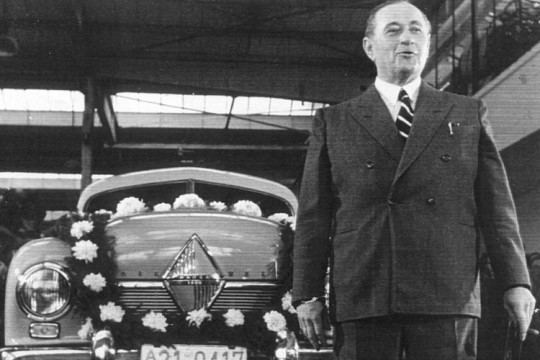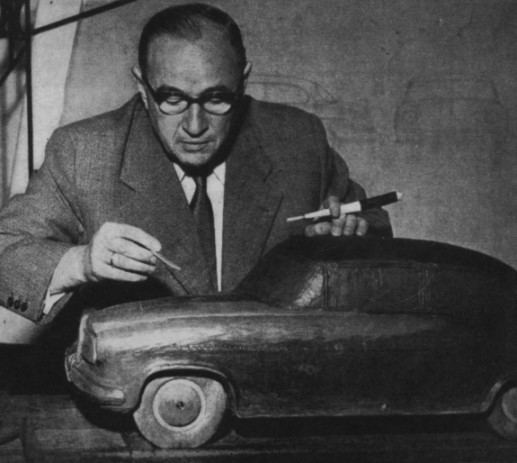Name Carl W. | ||
 | ||
Died July 28, 1963, Bremen, Germany | ||
Mit Stil: Borgward Isabella | Motor mobil
Carl Friedrich Wilhelm Borgward (November 10, 1890 in Altona, Hamburg – July 28, 1963 in Bremen) was a German engineer and designer and the creator of the Borgward group, based in Bremen.
Contents

Goliath Hansa 1100 Combi
Biography

He was of modest extraction, the son of a coal retailer, Wilhelm Borgward, and had twelve brothers and sisters. He undertook mechanical engineering studies, and obtained his engineering diploma in 1913.

He was wounded during World War I. In 1919 he became one of the partners of Bremer Reifenindustrie. The company was restructured and in 1920 became Bremer Kühlerfabrik Borgward & Co.

In 1924 and 1925 the company started to produce the small three-wheel trucks Blitzkarren and Goliath. With his partner Wilhelm Tecklenborg, in 1928 he created the company Goliath-Werke Borgward & Co. When the two associates took over Hansa-Lloyd-Werke in 1931, this became the Borgward Group.
On September 23, 1938, the Carl F. W. Borgward Automobil- und Motorenwerke factory was opened in Sebaldsbrück near Bremen. At that time, 22,000 people were working in the company. Until the end of the war the production of Borgward was mostly military vehicles and trucks.
When the factory was destroyed by bombing in 1944, half of the workers were prisoners of war and forced laborers. Carl Borgward was interned until 1948. Finally, just one year after being freed, he was already again a member of the Chamber of Commerce and Industry of Bremen.
In 1949, the first Lloyd LP 300 had been designed and produced. In Germany this car was nicknamed the Leukoplastbomber (Band-aid Bomber). The small car with a plywood body on a wooden chassis had a two-stroke engine and was in the market segment under the Volkswagen Beetle, and kept this position for more than a decade.
In 1949 Borgward had also presented the large Hansa sedan, which was the first European car with a pontoon body. He had taken ideas from American magazines, which he read when under detention.
The largest success came in 1954 with the Borgward Isabella. The Borgwards met the spirit of the time: the German customers wished for American type styling and rich chrome decoration with European compact dimensions. Borgward participated in detail in the design of all the car models.
Increased competition on the segment of mid-sized cars, and the too broad and uneconomical range of models, as well as wrong financial and tactical choices by the management, led the company into crisis at the end of the fifties. The new model Borgward-Lloyd Arabella should have eased the difficulties, but it was handicapped by quality problems.
In 1961, Borgward underwent one of the most spectacular bankruptcies in the history of Germany. The company went to the Land of Bremen, which had it liquidated, and part of the factory went to Hanomag. Years after the bankruptcy was closed, it came out that it had not been reasonable: All debts had been paid to the last cent.
Carl Borgward died of a heart attack at the age 72 on July 28, 1963.
His life work might continue: 50 years after closing down his grandson, Christian Borgward, together with his partner Karlheinz L. Knöss and with assistance from Chinese investors unveiled the company's first new car in over 40 years, the BX7 at the 2015 International Motor Show in Frankfurt.
